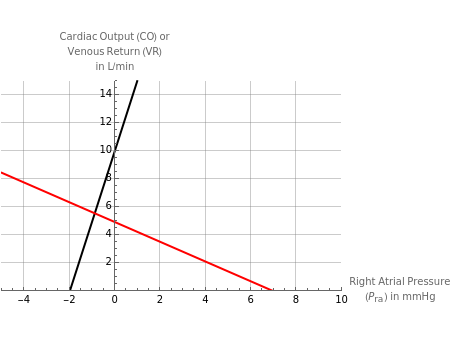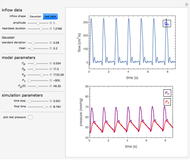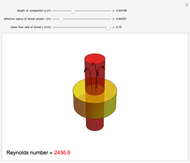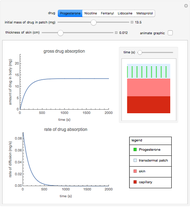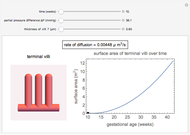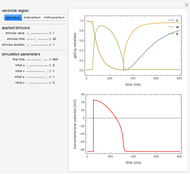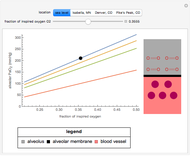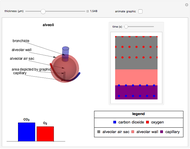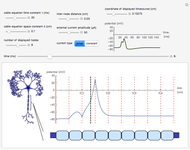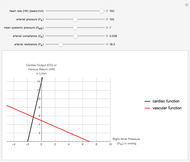Steady-State Operation of the Cardiovascular System

Requires a Wolfram Notebook System
Interact on desktop, mobile and cloud with the free Wolfram Player or other Wolfram Language products.
This Demonstration shows the steady-state operation of the cardiovascular system as represented by the point of intersection between the cardiac and vascular function curves. You can vary the controls to explore the effects of changing mechanical properties of the organs involved in cardiac function (e.g. arterial compliance).
Contributed by: Christopher B. Arena (April 2018)
Open content licensed under CC BY-NC-SA
Snapshots
Details
Cardiac output ( ) describes the pumping ability of the heart [1]. It is directly proportional to right atrial pressure,
) describes the pumping ability of the heart [1]. It is directly proportional to right atrial pressure,  , which also represents the preload. The preload controls the degree of stretch of the ventricle, and, according to the Frank–Starling law of the heart, increased preload and stretch ultimately increase the force of contraction and stroke volume. The equation for
, which also represents the preload. The preload controls the degree of stretch of the ventricle, and, according to the Frank–Starling law of the heart, increased preload and stretch ultimately increase the force of contraction and stroke volume. The equation for  is:
is:
 ,
,
where  is the heart rate in beats per minute,
is the heart rate in beats per minute,  is the compliance of the heart during diastole,
is the compliance of the heart during diastole,  is the compliance of the heart during systole,
is the compliance of the heart during systole,  is the arterial pressure, and
is the arterial pressure, and  is the pleural pressure.
is the pleural pressure.
Venous return ( ) is a reflection of the mechanical properties of the systemic circulation [1]. At steady-state,
) is a reflection of the mechanical properties of the systemic circulation [1]. At steady-state,  . The equation for
. The equation for  is:
is:
 ,
,
where  is the mean systemic pressure,
is the mean systemic pressure,  and
and  are the resistance and compliance of the venous vasculature, respectively, and
are the resistance and compliance of the venous vasculature, respectively, and  and
and  are the resistance and compliance of the arterial vasculature, respectively.
are the resistance and compliance of the arterial vasculature, respectively.
Snapshots 1 and 2 show the effects of increasing and decreasing heart rate, respectively. Snapshot 3 shows the effect of decreasing arterial compliance, as in the case of atherosclerosis.
Reference
[1] M. C. K. Khoo, Physiological Control Systems: Analysis, Simulation, and Estimation, New York: IEEE Press, 2000.
Permanent Citation
